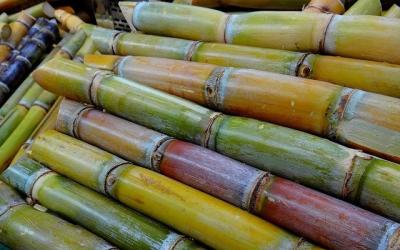LOS SACRAMENTOS COMO UNA FUENTE DE INGRESOS PARA LA IGLESIA EN VUELTA ABAJO.
THE SACRAMENTS AS A SOURCE OF INCOME FOR THE CHURCH IN TURN DOWN
Fecha recibido: 06/03/2020 | Fecha publicado: 17/05/2021 | Fecha corregido: 13/05/2021 |Autores
RESUMEN
El presente artículo, aborda, los sacramentos como una de las principales fuentes económicas con que contaba la Iglesia Católica, en la región cubana de Vuelta Abajo de La Habana. Para su confección el autor realiza un análisis de cómo estos, estaban constituidos por el conjunto de servicios prestados a la población y que, tenía el derecho a percibir ciertas cantidades de dinero, establecidos en tarifas por los reyes españoles, que variaban según las localidades y las épocas. También, de cómo en Cuba, con la aprobación del Sínodo Diocesano en 1680, se logra articular un sistema cobratorio para todo el territorio. Las fuentes investigadas se corresponden con documentos resguardados en los Archivos Nacionales, General de Indias y en los Libros Parroquiales de Vuelta Abajo. Además, de obras de prestigiosos estudiosos del tema. Como resultado el autor muestra, que, los primeros sacramentos se realizaron en Vuelta Abajo, a partir de 1688. El aumento del número de estos servicios, estaba en correspondencia con la evolución del territorio en los siglos XVIII y XIX, siendo disminuidos o incrementados por los obispos. Los sacramentos, comienzan a ser efectivos con la erección de las primeras parroquias, lo que confirma la débil presencia de la Iglesia, con anterioridad a estos años. Las recaudaciones, reportaron crecientes entradas, que permitieron la normalización de la actividad eclesiástica en el territorio, constituyendo pesadas cargas para la población vueltabajera, fundamentalmente para los sectores productivos como los vegueros. Esto, los mantenía en una constante situación de dependencia económica con respecto a la Iglesia.
Palabras clave: Sacramentos, Iglesia, Vueltabajo, fuente, ingresos.
THE SACRAMENTS AS A SOURCE OF INCOME FOR THE
CHURCH IN TURN DOWN
ABSTRACT
This article addresses the sacraments as one of the main economic sources available to the Catholic Church in the Cuban region of Vuelta Abajo de La Habana. For its preparation an analysis is made of how these were constituted by the set of services provided to the population and that they had the right to receive certain amounts of money, established in rates by the Spanish kings, which varied according to the localities and the epochs. Also, how in Cuba, with the approval of the Diocesan Synod in 1680, it is possible to articulate a collection system for the entire island territory. The sources used correspond to documents protected in the National Archives, General of the Indies and in the Parish Books of Vuelta Abajo. In addition, works by prestigious scholars on the subject. As a result, it is shown that the first sacraments were performed in Vuelta Abajo, starting in 1688. The increase in the number of these religious services was in correspondence with the evolution of the territory in the 18th and 19th centuries, being decreased or increased by the bishops. The sacraments began to be effective with the erection of the first parishes, which confirms the weak presence of the Church, prior to these years. The collections reported increasing inflows, which allowed the normalization of ecclesiastical activity in the territory, constituting heavy burdens for the population of the town, mainly for the productive sectors such as the vegueros. This kept them in a constant situation of economic dependence on the Church.
Key Words: Sacraments, Church, Vueltabajo, source, income.


